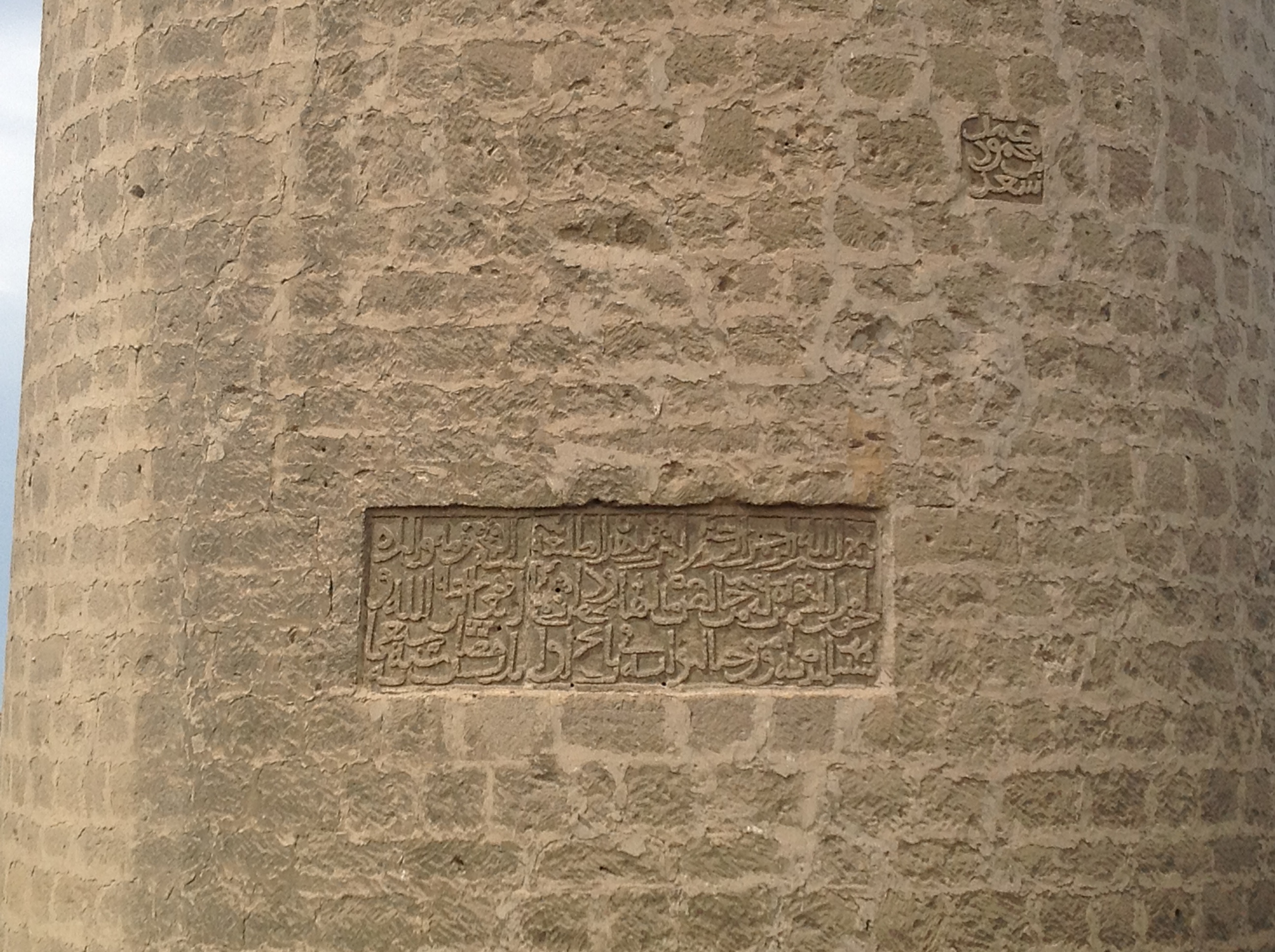Nardaran Fortress on:
[Wikipedia]
[Google]
[Amazon]
Nardaran Fortress () – A historical and architectural monument located in the Nardaran settlement of the Sabunçu district in
 Two inscriptions on the facade of the fortress tower indicate that the structure was built in the
Two inscriptions on the facade of the fortress tower indicate that the structure was built in the
Baku
Baku (, ; ) is the Capital city, capital and List of cities in Azerbaijan, largest city of Azerbaijan, as well as the largest city on the Caspian Sea and in the Caucasus region. Baku is below sea level, which makes it the List of capital ci ...
. The fortress has been registered as a monument of global significance by the Ministry of Culture and Tourism of the Republic of Azerbaijan. In 2001, the Nardaran Fortress, along with other Caspian defense structures, was included in UNESCO
The United Nations Educational, Scientific and Cultural Organization (UNESCO ) is a List of specialized agencies of the United Nations, specialized agency of the United Nations (UN) with the aim of promoting world peace and International secur ...
's Tentative List.
Two inscriptions on the facade of the fortress tower indicate that the structure was built in 1301 by architect Mahmud ibn Sa'd. This architect also planned and constructed the Bibi-Heybat Mosque in the Baku bay and the Molla Ahmad Mosque
The Molla Ahmad Mosque (), also known as the Nasir ad-Din Gashtasib Mosque (), is a former mosque, located on Sabir street, in the Old City (Baku), Icherisheher of Baku, the capital of Azerbaijan. Completed in 1300 Common Era, CE, the former mosq ...
in the Inner City (Icherisheher), which was built in 1300 and also bears the architect's name on its inscription.
The Nardaran Fortress consists of fortress walls enclosing a square-shaped courtyard and a cylindrical tower located at the center of the courtyard. Local stone was used in the construction of the fortress.
History
Hijri year
The Hijri year () or era () is the era used in the Islamic lunar calendar. It begins its count from the Islamic New Year in which Muhammad and his followers migrated from Mecca to Yathrib (now Medina) in 622 CE. This event, known as the Hij ...
700 (1301 AD) by architect Mahmud ibn Sad (or Mahmud ibn Said ) .
The larger inscription, located at the height of the second tier above the entrance to the tower, states:
The smaller inscription, located slightly above the first one and on the eastern side, states: "The work of Mahmud, son of Sa'd."
This architect also planned and constructed the Bibi-Heybat Mosque in the Baku bay and the Molla Ahmad Mosque in the Icherisheher, built in 1300, which also bears the architect's name on its inscription.
All three monuments testify to the architect's extraordinary talent, his deep knowledge of the characteristics of fortress constructions, and his artistic imagination.
Architectural features
The Nardaran Fortress consists of fortress walls enclosing a square-shaped courtyard and a cylindrical tower situated at the center of the courtyard. The walls surrounding the courtyard are 6 meters high and are reinforced by bastioned towers on all four sides. The central tower in the courtyard has a height of 12.5 meters. Local stone was used in the construction of the fortress. The cylindrical shape, division into three tiers topped with stone domes, the second tier's elevated entrance, and other features make the central tower of the Nardaran Fortress similar to the central tower of the Round Mardakan Fortress. Despite these similarities, the donjon of the Nardaran Fortress also has distinctive characteristics: for example, unlike other Absheron fortresses, the walls of the Nardaran donjon do not incline inward as they rise but maintain their straight form. Additionally, unlike the corbels of the Round Mardakan Fortress donjon, the donjon of the Nardaran Fortress is built from plain hewn stones without decorative elements.See also
* Round Mardakan Fortress * Architecture of AzerbaijanReferences
Literature
* * * * * {{Castles and fortresses in Azerbaijan Buildings and structures in Baku Tourist attractions in Baku Monuments and memorials in Azerbaijan Castles and fortresses in Azerbaijan